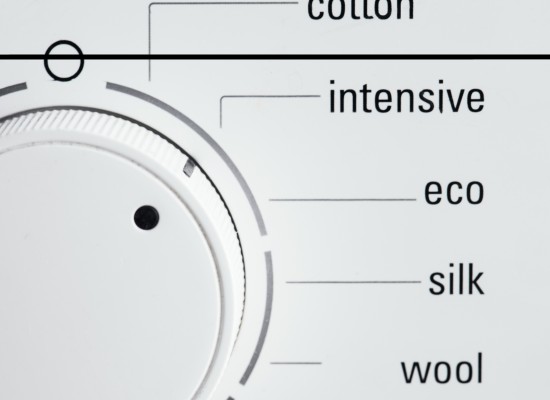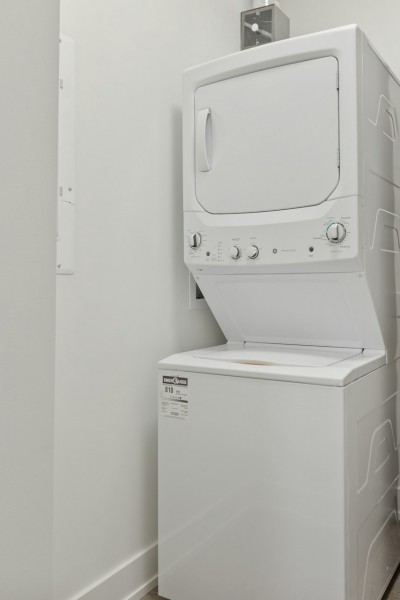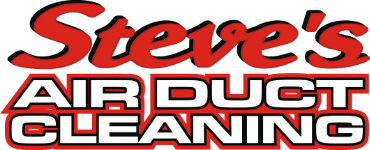Dryer Vent Cleaning: How It's Done and Why It Matters

Most of us are mindful to turn our ovens off after using them, or to blow out every candle before bed - and aware of the risks if we fail to do either. However, dryer vent cleaning isn’t high on our risk of collective concerns. It’s natural to write off dryer functioning issues as minor inconveniences of older machines - and incorrectly assume they’re harmless. Dryer vent cleaning is much more than a luxury or above-and-beyond home service - it’s a crucial preventative measure to keep your home and family safe. A lack of awareness about dryer vent clogs has caused countless homes to go up in smoke, devastating families and needlessly ending human lives in the process.
"An estimated 2,900 clothes dryer fires in residential buildings are reported to U.S. fire departments each year and cause an estimated 5 deaths, 100 injuries, and $35 million in property loss"
—U.S. Fire Administration
How Do Dryer Vents Become Hazards?
There’s no flame passing through your dryer vent. Dryer vents don’t contain propane or natural gas - and most dryers don’t even come with a fire hazard warning. Dryer vents are simply flexible, insulated hoses extending from your dryer to the adjacent exterior wall. Dryer vents allow the heat from our dryers to pass to the outdoors.
What’s so dangerous about this fairly simplistic process? Lint. When clothing goes through a wash cycle, tiny particles of fabric are loosened, seperating them from clothing. The lint filter is designed to catch these stray particles while your clothing dries. However, this feature isn’t foolproof, and a sizable percentage of lint isn’t caught - passing from your clothing straight into the dryer vent hose. Over time, more and more of this stray debris settles and accumulates in your dryer vent, eventually clogging the narrow hose and restricting air flow. If dryer vents aren’t cleaned consistently, obstructive clogs of fluffy, ultra-dry lint can dangerously overheat and ultimately ignite.
What Warning Signs Should I Watch For?
Thankfully, dryer vents don’t become dangerously clogged overnight. Depending on the frequency with which your dryer’s used, dryer vent clogs can take anywhere from a few months to a few years to develop. In the meantime, you can watch for a few classic warning signs of dryer vent clogging to help reduce your household’s risk.

- Clothes take an especially long time to fully dry.
- The exterior surfaces of your dryer - especially the door - become very hot while your dryer’s in use.
- Your laundry room becomes dank and damp, potentially developing a musty odor.
- The air in your laundry room smells burnt (even faintly).
- At the end of a dryer cycle, your clothing is extremely hot.
- The dryer vent flap (on the exterior wall of your home) barely moves while your dryer’s in use. This is a sign of low air flow, potentially indicating a clog within your dryer hose.
Sound familiar? If these symptoms are happening in your home, you may be at risk of a dryer vent fire. Call Steve’s Air Duct Cleaning to schedule dryer vent cleaning and reduce your family’s risk. Even if you’re not noticing these symptoms, if it’s been a year or more since your last dryer vent cleaning, it’s essential to schedule preventative dryer vent cleaning as soon as possible.
Are There Any Other Risks of Skipping Dryer Vent Cleaning?
While fire prevention ranks most highly as a reason for dryer vent cleaning, there are many other reasons to schedule this service routinely.
Energy Consumption
Using a dryer on your freshly-washed clothes removes moisture and vents it from your home through your dryer vent. However, using a dryer with a clogged vent means that only a portion of that moisture can pass through at any given time. This reduces the efficiency of your dryer, making it work harder for the same result with every load of clothes. You may have noticed increased energy bills - and additional time required for every load of clothing for them to be fully dried. Scheduling regular dryer vent cleaning can reduce your energy costs monthly, and cut down on the time it takes to dry each load of clothing.
Deadly Gas Buildup
Carbon dioxide is known as the "silent killer" for good reason- it gives no warning of its presence before building to a dangerous degree. Approximately five hundred North Americans die each year from carbon dioxide in their homes - and a staggering 20,000 more are sickened by the same cause. There are several common sources of carbon dioxide poisoning - including leaky furnaces vents, fire places, or cars left running in the garage. Clogged dryer vents can also lead to dangerous carbon dioxide buildup. Fumes which vent through functional dryer vents are trapped when dryer vents become clogged with trapped debris. When this happens, fumes leak back into your home’s environment and ultimately circulate through your HVAC system.
Stay alert for the following signs of carbon monoxide poisoning - and if you suspect a carbon monoxide leak in your home, evacuate and call 911 immediately.

Click here to download a PDF of the infographic above.
Health Hazards
Many homeowners aren’t aware that some strains of mold - which are commonly found in basements - can cause allergies, lung infections, respiratory disease, heart infections and even death. As such, its crucial to ensure that your basement environment stays as consistently dry as possible, as mold growth flourishes in dark, dank spaces. Similarly, clogged dryer vents aren’t able to properly filter moisture from your clothing as it dries, and the accumulation of moisture within your dryer vents can cause the growth of dangerous mold. By scheduling regular dryer vent cleaning, you’ll help to reduce the risk of harmful mold growth in your home.
Early Death for Your Dryer

If your dryer vent becomes clogged, your dryer will have to work harder to perform its core functions. Your clothes may also require additional time drying if your vent isn’t properly functioning. If either circumstance occurs, your dryer will have to work harder with each load of clothing than was intended by its manufacturers. This will reduce the expended “lifespan” of your dryer - meaning you’ll have to shell out to replace the machine sooner and more frequently over years without regular upkeep. Put simply, investing in dryer vent cleaning not only prevents health and safety risks, but it’ll save you money in the longrun.
What Tools and Steps Are Involved in Dryer Vent Cleaning?
When you call Steve’s team of dryer vent cleaning professionals, one will arrive with a truck full of every tool required to get the job done right. This includes a high-powered specialty vacuum, various attachments for targeting hard-to-reach lint, and a number of specialty brushes to reach deep into your dryer vent.
When one of our technicians arrives to clean your dryer vents, they’ll take the following steps.

- First, technicians will remove your dryer’s lint trap filter and clean it thoroughly.
- The lint trap’s housing will be thoroughly cleaned.
- Next, they’ll unplug your dryer and disconnect your dryer vent.
- The interior of your dryer duct will be scoured with the appropriate vacuum cleaner brushes until every trace of lint has been removed.
- The vent cap’s exterior surface will be inspected, cleaned, and vacuumed.
- Next, the dryer vent flap will be inspected to ensure that its functioning correctly. If necessary, the vent cap will be replaced with a new and fully functioning model.
- If your dryer vent is a flexible hose, it will be reattached. If it’s made of galvanized steel, it’s reassembled first and then reattached.
- Finally, all clamps will be refastened, securing each component of your dryer vent system into place. If necessary, duct tape will be used to seal duct sections.
After our technicians reattach your dryer vent, they’ll plug your dryer back in and move it back to its designated location. From there, they’ll likely run your dryer for a few minutes to ensure that your dryer vent cap and all other components are functioning correctly.
If your dryer vent cap is made from flexible tubing, you should strongly consider having professionals replace it with a galvanized sectional pipe instead. Fire safety experts recommend this upgrade, as the ribbed edges of flexible dryer vent tubes are more susceptible to lint buildup than galvanized metal alternatives. Galvanized vents have smooth interiors, allowing lint to pass right through them with ease.
Call to Schedule Dryer Vent Cleaning Today
The importance of dryer vent cleaning and maintenance can’t be understated. If your dryer vent becomes clogged with lint, your energy efficiency will suffer. In turn, you’ll waste excess money on electrical costs each month, and shorten your dryer’s span of functioning by forcing it to work harder with every use. Most significantly, without consistent dryer vent cleaning from seasoned professionals like ours, you’re increasing your household’s risks of dangerous and even deadly consequences, from deadly carbon dioxide poisoning to devastating dryer vent fires.
Clogged dryer vents are a top cause of household files in the U.S. and abroad. At Steve’s Air Duct Cleaning, we’re proud to provide a range of essential home services - including air duct cleaning, tile and grout cleaning, emergency flood repairs and much more. Contact our family-owned team right away to schedule dryer vent cleaning in Arvada, Thornton, or elsewhere in the greater Denver area.
Start Breathing Easier.
Your air ducts are the lungs of your home and keeping them clean keeps you and your family healthier and your HVAC equipment working optimally.

